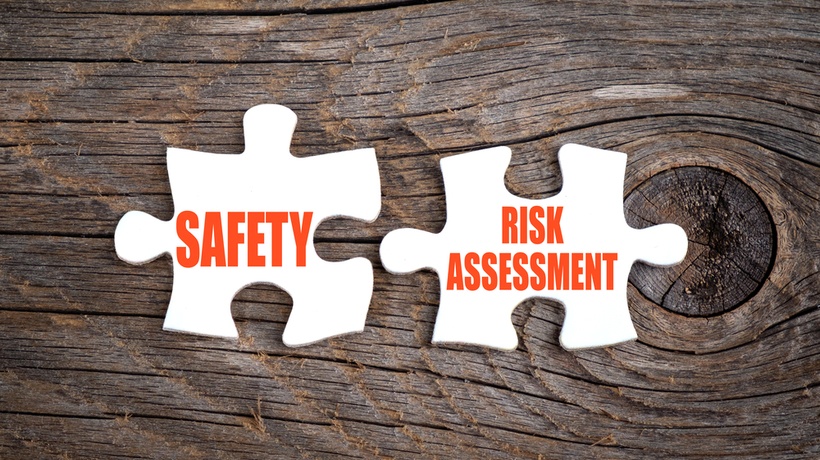How To Create Engaging Safety Training Videos
Let’s address the elephant in the room; safety training videos are boring. They’re usually synonymous with outdated hairstyles, bad acting, and even worse dialogues. There’s also typically a little archaic tech thrown into the mix just to remind employees of the times when the pager reigned. But there are ways to make your videos more realistic, relatable, and entertaining—you read that right. Best of all, you can engage employees without underplaying the importance of compliance in the workplace. These tips can help you produce safety training videos for your team that are Oscar-worthy. This may be an overstretch, but they’ll definitely foster an emotional connection with your remote workforce.

1. Focus On Realistic Compliance Challenges
Now is not the time of far-flung hypotheses. Stick with realistic scenarios and safety challenges that employees deal with every day. Or at least are feasible within the realm of their job duties and roles. For example, your call center employees probably won’t encounter a knife-wielding maniac that’s ripped straight from slasher films. That would make for an exciting safety video, granted. But they’re more concerned about how to maintain a safe workspace and diffuse tense situations on the phone. Effective workplace safety online training courses keep it real so that staffers can use their know-how in practical settings.
2. Keep It Brief
Staffers don’t have time to watch a feature-length film when they’re trying to get the job done. Keep safety training videos quick and concise so that staffers can bridge gaps immediately and return to their work duties. That said, some safety training topics may require further exploration. In this case, you can break it into a series, whereby each video addresses a sub-topic or task. For instance, your new COVID-19 crisis library consists of 10 videos that cover everything from washing hands to social distancing guidelines.
3. Use Animations For Hazardous Tasks
Some situations are too risky to act out. However, you can use animations to re-enact the scene and impart pointers. This is particularly useful for Coronavirus safety training videos as you don’t want to jeopardize anyone’s health in the production process. For example, the main character might accidentally expose themselves to the virus. The video recaps the symptoms, treatments, and repercussions for your company.
4. Include Personal Anecdotes And Examples
The most relatable training experiences are personal. And it doesn’t get more personal than anecdotes and real-world examples that help employees learn from others’ mistakes. Your safety training video might dramatize an event from the past. Such as the time that your sales manager tripped on an item that was left on the floor. Employees form an emotional connection because it could happen to them. These anecdotes also emphasize the importance of compliance and how breaches negatively impact staffers and the organization, as a whole.
5. Optimize For Mobile Viewing
Modern learners want mobile-friendly training. They should be able to watch the safety training video on any device, whenever the need arises. Optimizing for mobile viewing isn’t just about compressing media. You must also include subtitles for employees with special needs or those who train on-the-go. For instance, they watch the demo video during their morning commute or while waiting for a client meeting. Subtitles also make it easier to localize content, as staffers can choose their preferred language.
6. Host A Viewing Party For Direct Feedback
Don’t post your new safety training video quite yet. It’s always best to gather employee feedback before you make it official. So, host a viewing party and ask for their input. What did they think about the subject matter? Were they able to relate to the situation? Would they change anything about the visuals or dialogue? You can even focus on subtler video elements, like music or sound effects. Invite them for another viewing session after you incorporate their feedback to ensure it’s ready for your big L&D debut.
7. Invest In Video Editing Software
Robust video editing software typically includes an asset library, recording tools, and special effects, such as transitions and audio overlays. This makes it easier to produce top-notch safety training videos on a tight budget. You should sign up for free trials to test the tool’s performance. Develop a test project to see if it’s user-friendly for your team and evaluate the formatting process.
8. Hire A Professional Video Production Team
Another option is to hire an outsourcing partner to produce your workplace safety training videos. They already have the necessary tools, design skills, and background experience. Vendors can also help you curate online training content for the video and shoot fresh footage. Or even repurpose existing assets to cut costs. For example, take clips from webinars or modules, splice them together, and add transitions or visual aids. If you do outsource the project, vet vendor qualifications and submit RFPs to top contenders. When in doubt, hire them for a sample video to gauge their customer service and quality of work firsthand.
Producing relatable safety training videos for your staffers is all about personalization. Getting to know their preferences, cultural backgrounds, and on-the-job challenges so that they connect with the story. This brings me to another insider tip: follow the story arc. Start with a brief intro, move onto the obstacle, then highlight the compliance resolution. Of course, this should be framed by engaging dialogue, relevant characters, and eye-catching visuals. The goal is to captivate your audience without diminishing the real-world value of safety training.
Health and safety training should be high on your list of L&D priorities, now more than ever. If you want to find everything you need in order to launch an effective safety training strategy for your organization, download the eBook Safety Training Success For SMBs: How To Prep Your Team For A Post-Pandemic Workplace and benefit from its valuable insights and best practices.









